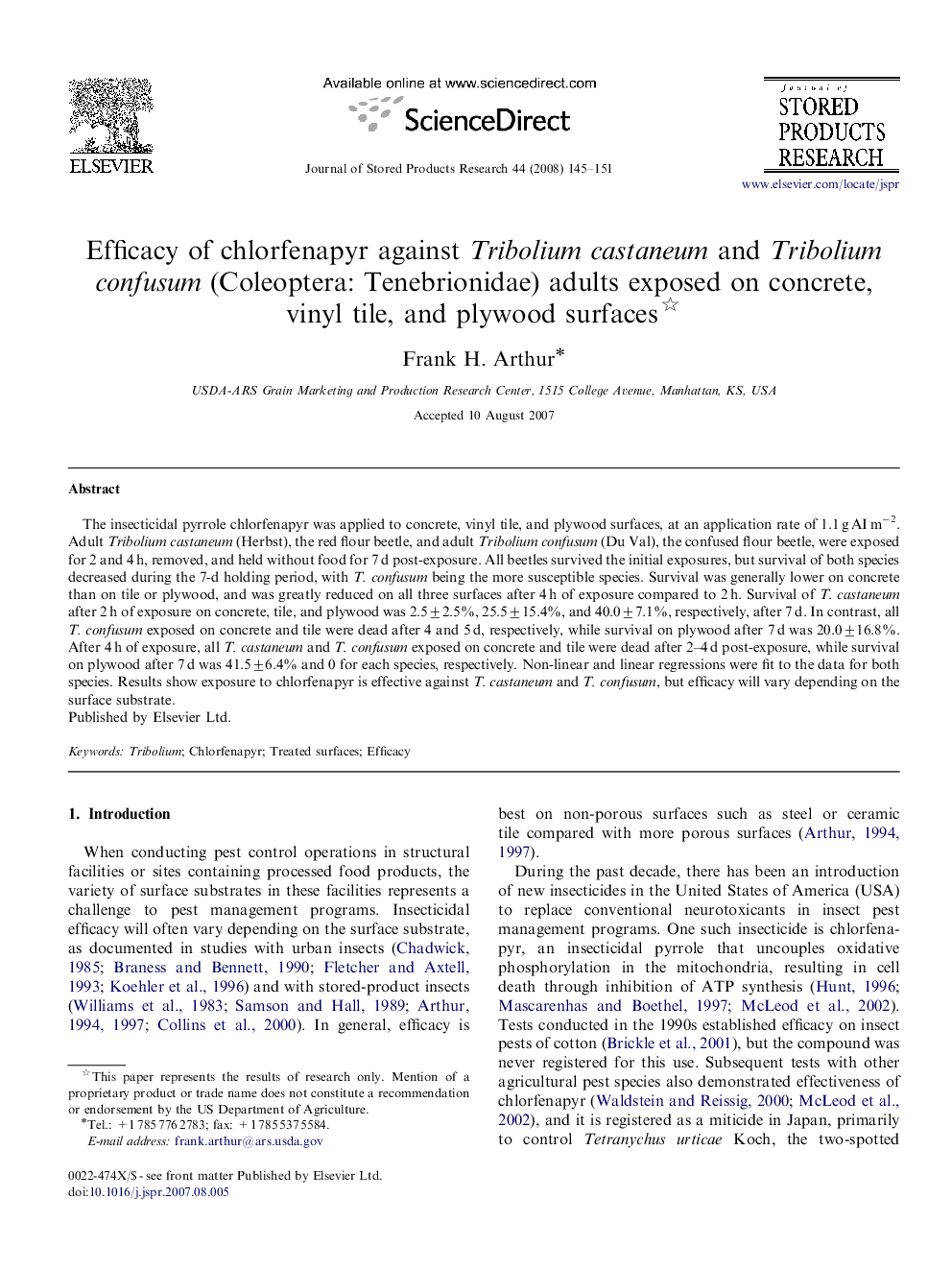| کد مقاله | کد نشریه | سال انتشار | مقاله انگلیسی | نسخه تمام متن |
|---|---|---|---|---|
| 4517354 | 1322539 | 2008 | 7 صفحه PDF | دانلود رایگان |

The insecticidal pyrrole chlorfenapyr was applied to concrete, vinyl tile, and plywood surfaces, at an application rate of 1.1 g AI m−2. Adult Tribolium castaneum (Herbst), the red flour beetle, and adult Tribolium confusum (Du Val), the confused flour beetle, were exposed for 2 and 4 h, removed, and held without food for 7 d post-exposure. All beetles survived the initial exposures, but survival of both species decreased during the 7-d holding period, with T. confusum being the more susceptible species. Survival was generally lower on concrete than on tile or plywood, and was greatly reduced on all three surfaces after 4 h of exposure compared to 2 h. Survival of T. castaneum after 2 h of exposure on concrete, tile, and plywood was 2.5±2.5%, 25.5±15.4%, and 40.0±7.1%, respectively, after 7 d. In contrast, all T. confusum exposed on concrete and tile were dead after 4 and 5 d, respectively, while survival on plywood after 7 d was 20.0±16.8%. After 4 h of exposure, all T. castaneum and T. confusum exposed on concrete and tile were dead after 2–4 d post-exposure, while survival on plywood after 7 d was 41.5±6.4% and 0 for each species, respectively. Non-linear and linear regressions were fit to the data for both species. Results show exposure to chlorfenapyr is effective against T. castaneum and T. confusum, but efficacy will vary depending on the surface substrate.
Journal: Journal of Stored Products Research - Volume 44, Issue 2, 2008, Pages 145–151